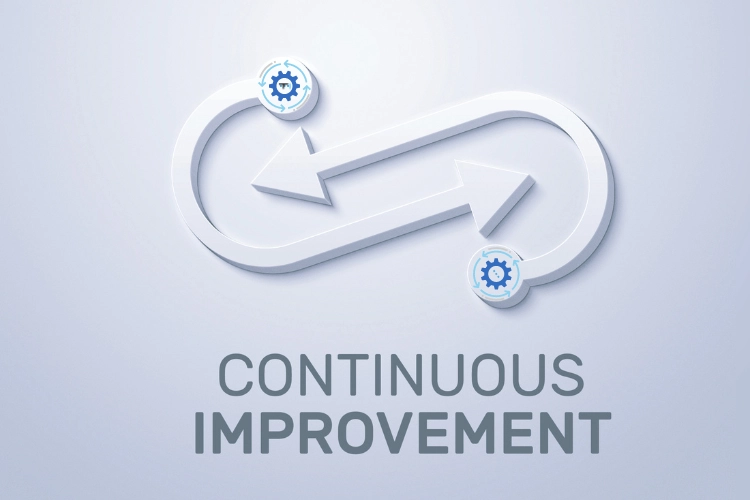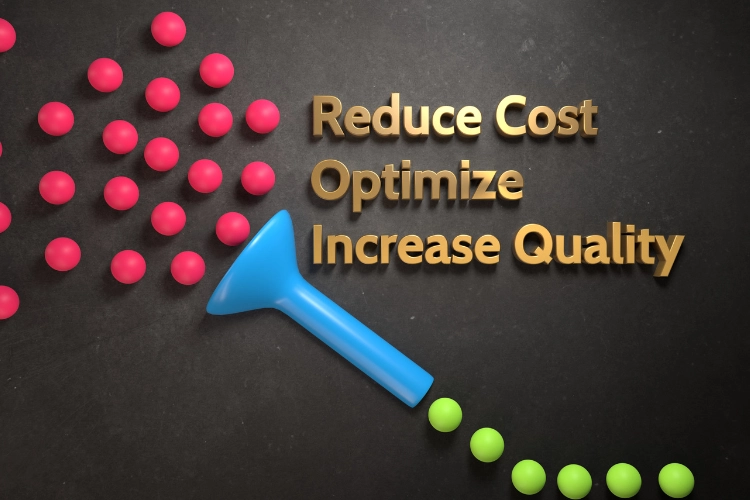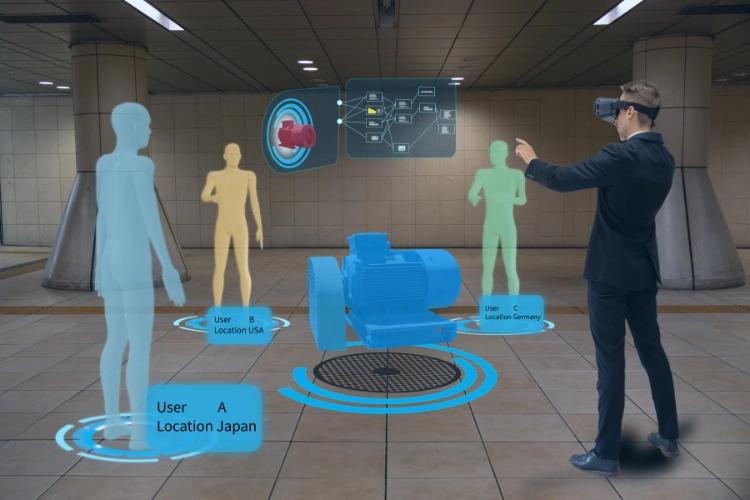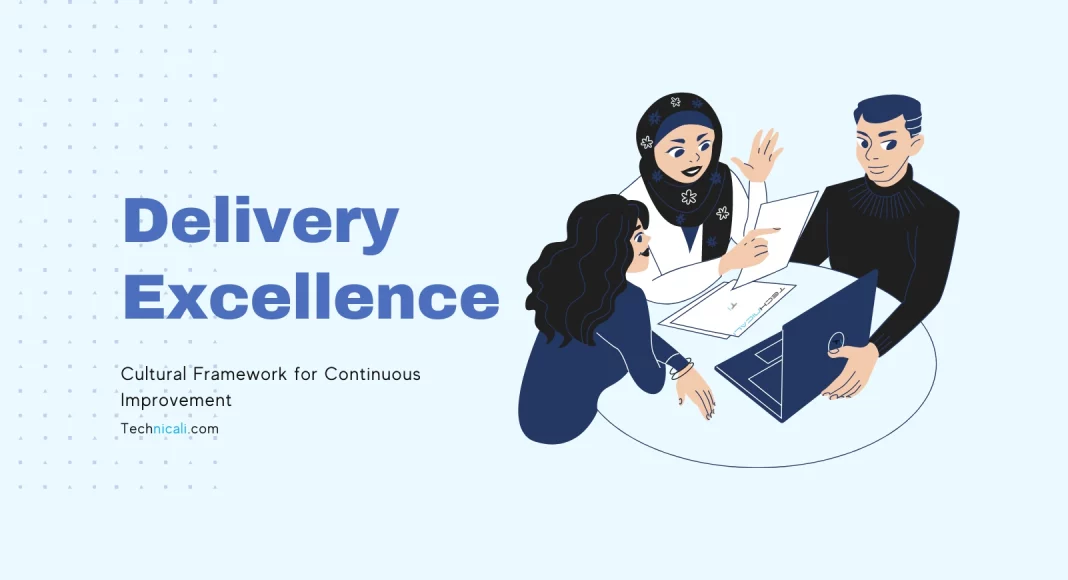A company is only as good as its last delivery. The need for continuous improvement is essential to success in business.
Undoubtedly, your business is running just fine without it! But you would be wrong.
Without Delivery Excellence, stagnation and decline are sure to follow.
For your company to achieve true Business Agility, you need Delivery Excellence as a systematic cultural framework, involving all levels in the process and introducing optimization tools.
The result is improvements that have measurable results.
It builds a culture of continuous improvement that helps you identify and fix the broken parts before they become a problem.
Contents
What is Delivery Excellence and Why is it important?
Delivery Excellence is a customer-centric approach to defining, building, and releasing a continuous flow of valuable products and services. It is one of the seven core competencies of the Lean Enterprise.
It enables your organization to deliver value efficiently and effectively by eliminating waste through process optimization, increased collaboration and communication across departments, a better understanding of customer needs, and using technology for automation and data-driven decision-making.
It must focus on critical success factors such as customer satisfaction, cost reduction, improved quality, and faster market time. It is a continuous effort that requires strategic planning and ongoing execution to drive business value.
Delivery Excellence must be a top-down initiative for it to work effectively. Leadership should set an example by embracing the culture of constant improvement and leading by Example. Everyone in your organization should understand how their individual contribution affects the company’s overall success.
The Seven Core Competencies of the Lean Enterprise Delivery Excellence
Delivery Excellence is a key component of Lean Enterprise, which focuses on seven core competencies.
- Customer Focus
- Continuous Improvement
- Collaboration
- Innovation and Learning
- Leadership and Culture
- Process Optimization
- Technology Enablement
These Seven Competencies can be applied to any lead enterprise encouraging agile delivery to achieve business agility.
1. Customer Focus

The first core competency, customer focus, is understanding and meeting customer needs. This includes understanding their goals and needs and finding ways to exceed their expectations. It also involves listening to customers and taking their feedback into account when making decisions.
1.1 Understanding Customers’ Needs
To appropriately respond to customers’ needs, Delivery Excellence teams must understand their customers and how they use their products and services. Teams may conduct customer research, surveys, and interviews to gain insights into customer behavior. They can then use this information to identify ways to optimize their products and services. For Example, in Software Development, A/B Testing techniques are commonly used to understand user preferences and improve their experience.
1.2 Focusing on Customer Satisfaction and Experience
The customer experience encompasses all aspects of the interaction between a customer and a business. It is essential to focus on this experience to create a positive impression and keep customers/users returning. Methods for doing this include providing excellent customer service, delivering quality products and services, and making it easy for customers to interact with your business.
1.3 Taking Customer Feedback into Account
Customer feedback can help businesses understand what they are doing well and where to improve. It is essential to consider customer feedback when making decisions so that you can continue to meet or exceed customer expectations. The Tech-Savvy Consumers of today expect to be heard and responded to. The Delivery Excellence Teams are in the best position to Leverage this real-time feedback by introducing mechanisms such as Customer Forums and Voice of Customer Surveys.
2. Continuous Improvement

This core competency is all about creating a culture of continuous improvement within the organization, using optimization tools and data-driven decisions to make incremental changes that improve customer experience and product quality. The team works to identify areas where minor improvements can lead to significant results and then puts processes in place to measure the critical elements of excellence and track progress over time.
2.1 Using Optimization Tools
Optimization tools can help businesses identify areas where they can make small improvements that lead to significant results. These tools include things like process mapping, performance testing, value stream mapping, and data-driven decision-making.
2.2 Making Incremental Changes
Small iterations can be introduced quickly and efficiently, allowing for continuous improvement over time. This approach is based on systems thinking principles, which emphasize that when you make a change in one place of a system, it will have an effect elsewhere too. Business processes come with unprecedented levels of complexity. It becomes essential to deliver the best results innovatively and repetitively.
2.3 Tracking Progress over Time
Any delivery model for product and service excellence must include ways to measure progress over time. This will help the Delivery Excellence team identify areas for improvement, ensure quality standards are being met, and demonstrate results to senior management. The team should track customer feedback, product metrics, employee engagement surveys, and other key performance indicators pertinent to the organization’s overall performance and end objective.
3. Collaboration

The third core competency, collaboration, is about creating a working environment where everyone works together to solve problems and innovate. This includes both internal and external partnerships, as well as engaging with customers and their strategic partners to create value. This is one of the most important stepping stones that can make or break in an agile enterprise.
3.1 Internal Collaborations
All levels of the organization must collaborate to solve problems and develop new ideas. This includes cross-functional teams that bring different perspectives and skill sets together to work on projects. Many so-called agile companies rely on google sheets, excel, and other legacy systems to store and make decisions. This can be inefficient and slow down the process of delivering new products and services, making it more critical than ever to have an agile internal collaboration tool that allows for quick decision-making and streamlined collaboration that can truly create a culture of innovation.
3.2 External Collaborations
Having a strategic partner will tell you what the market needs and help you deliver products that are both on target and scalable. External collaborations allow you to expand your reach and knowledge base, creating a competitive edge that can lead to market success. It’s also important to consider the partner’s own internal capabilities and processes so that they can help you with developing, testing, and launching your product or service. Collaborating with customers, partners, vendors, and other stakeholders helps businesses stay ahead of trends and create value for everyone involved.
3.3 Engaging with Customers
Engaging with customers is vital in order to understand their needs and come up with innovative solutions. This can be done through market research, customer surveys, focus groups, and user a/b testing. This allows the Delivery Excellence team to focus their deliverables that are tailored to customer needs, resulting in more efficient and valuable products and services.
4. Innovation and Learning

The fourth core competency of Delivery Excellence is innovation and learning. This involves leveraging new technologies to improve processes, products, and services while encouraging employees to learn on the job and think outside the box.
4.1 Leveraging New Technologies
Technology is constantly evolving, and it can be used to automate processes, improve customer experiences, and create a more efficient workflow. Businesses need to stay up-to-date with the latest technologies to stay competitive. Right now, there is a boom in automation and integration platforms that facilitate a smoother workflow for complicated software while implementing AI and Machine Learning. For Example, Many ERP, CRM, and Accounting Platforms like HubSpot, Salesforce, and Quickbooks have integration APIs that allow for many processes to be automated, reducing the manual effort needed.
4.2 Learning on The Job
Learning is an integral part of the process, and it’s essential to have employees that are always looking to improve themselves and their operations. This can involve training programs, conferences, seminars, or mentoring from experienced professionals. Any job title is bound to have new trends and technologies entering the market. It is crucial to stay ahead of the curve by having an environment that encourages learning. The drive to learn and improve attitude should be fostered and rewarded, as it is essential to a successful delivery team.
4.3 Innovative Solutions – Thinking Outside the Box
Innovation is key to success in any industry, and it starts from the top. Encouraging employees to think outside the box and challenge established norms can lead to new products or services that give a business an edge over its competitors. Innovation should be encouraged, not stifled, and all ideas should be welcomed so that there is room for Creative thinkers to bring innovative solutions. Encouraging different perspectives with accountability and feedback will help the team focus on solutions instead of finger-pointing, leading to great ideas that otherwise wouldn’t have been thought of.
5. Leadership and Culture

The fifth core competency of Lean Enterprise is Leadership and Culture. This pillar is essential to sustain a culture of Delivery Excellence, as it provides the leadership principles and methodologies required to ensure the organization’s success. Leaders must articulate their vision for Continuous Improvement and foster collaboration across teams.
This competency is about creating an environment where everyone feels included, respected, and heard. This involves setting up an organizational structure that helps people communicate better and encourages open dialogue between members of all levels within the organization. It also involves creating an atmosphere of trust and psychological safety, where everyone is encouraged to share their opinions and ideas. Ultimately, this helps teams make decisions faster, leading to the more efficient delivery of products and services.
5.1 Leadership
Leadership is what sets the tone for the entire organization. Without solid leadership, teams can quickly become disorganized and inefficient. This has created a necessity for dynamic culture leadership that is agile and adaptive to the ever-changing environment. It has 4 key elements.
- Vision: Leaders must have a clear vision for Delivery Excellence and communicate it to the team members.
- Interpersonal Skills: Leaders must possess strong communication and interpersonal skills to ensure that their vision is understood.
- Decisiveness: Leaders must be able to make decisions quickly and decisively regarding initiatives or changes.
- Being Flexible and Adaptable: Leaders must be flexible and adaptive, so they can respond to trends, customer feedback, and changes in the market.
5.2 Culture
Leaders must be willing to invest in people and recognize their efforts. This should include opportunities for learning and development, reward performance, and encourage innovation. Moreover, creating relevant practices to ensure everyone is respected and appreciated for their contributions can help develop a culture of trust and collaboration.
6. Process Optimization

Process optimization is the sixth pillar of Lean Enterprise, and it involves creating an efficient and consistent workflow to ensure that products are consistently delivered on time. This should include processes such as Kanban, Agile, Six Sigma, or other methodologies that have proven effective in improving outcomes. Additionally, managing compliance, waste, and variations can help improve the overall process efficiency.
It involves using the right tools to ensure that data is collected, managed and analyzed to identify workflow improvement areas.
6.1 Identify and Evaluate Processes
The first step is identifying and evaluating existing processes to determine which needs improvement. It should be based on data insights that complement your business goals and objectives.
6.2 Automate Agile Delivery
Once the processes are identified and evaluated, the next step is to automate them to optimize their delivery. This could involve using DevOps, Continuous Integration and Delivery (CID), or other continuous delivery pipelines to ensure that the product is delivered promptly. Leveraging an Agile approach will help you ensure that all tasks are completed on time and according to the company’s standards.
6.3 Monitor & Measure
The final step is to monitor and measure your processes’ performance to ensure they meet their objectives. This involves tracking key performance indicators, analyzing data, and making adjustments in a timely manner. Regular review of process performance can help identify areas where improvement is needed and help ensure that Delivery Excellence saves you time, energy, and money.
7. Technology Enablement

Technology has become an integral part of success in the world of delivery excellence. It enables teams to work smarter and faster by providing real-time access to data, insights, and resources. Leveraging technology is key to ensuring that future deliveries are successful, and it involves integrating new tools and technologies into existing processes to streamline operations.
7.1 Select Appropriate Tools
The first step is to select the right tools for your team and project. This could include customer relationship management tools for tracking customers and getting insights, agile project management tools for delegating and monitoring tasks, enterprise resource planning tools for managing employees and resources, user interface testing tools for validating designs, or analytics and visualization platforms to track the performance of processes.

7.2 Integrate Tools and Data
Once the tools are selected, they must be integrated into existing systems and processes. This could involve connecting different databases or platforms so that teams can access the information they need to make decisions. You can also integrate all company tools with AI and ML platforms like OpenAI and Azure Machine Learning to help you analyze data and trends, so you identify opportunities to improve the customer experience and further reduce delivery time. To make this as seamless as possible, it’s essential to understand the technology you are using and the integration requirements for each tool.
7.2 Train your people
Finally, training your people on using the new tools and technologies is essential. This will ensure they can make the most of them and use them effectively. This can be done through workshops, webinars, online tutorials, or by engaging experts in the field who can provide guidance and advice. Doing so will ensure that everyone is up-to-date on the latest developments in delivery excellence and can help you achieve your goals faster.
By utilizing technology, teams can optimize their project workflows, have the commitment to speed quality, and manage their clients’ needs.
Conclusion
A successful Approach to Delivery Excellence requires the right combination of people, processes, and technology.
Lean Enterprise’s seven core competencies are essential to achieving Business Agility and building a culture of continuous improvement.
By creating a customer-centric flow supported by decisiveness, flexibility, process optimization, and technology enablement, organizations can unlock the potential of their teams and deliver value through collaboration, innovation, and agility.
This approach empowers teams to run projects efficiently and create high-value products or services while reducing project costs and achieving higher support satisfaction.
Put simply, Delivery Excellence is the key point to unlocking business success in a competitive environment, and it is essential for any organization striving for greatness form today and in the future.

